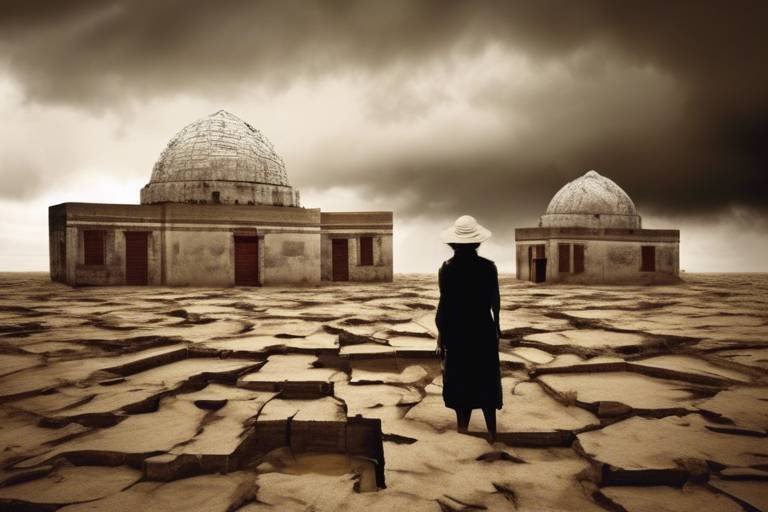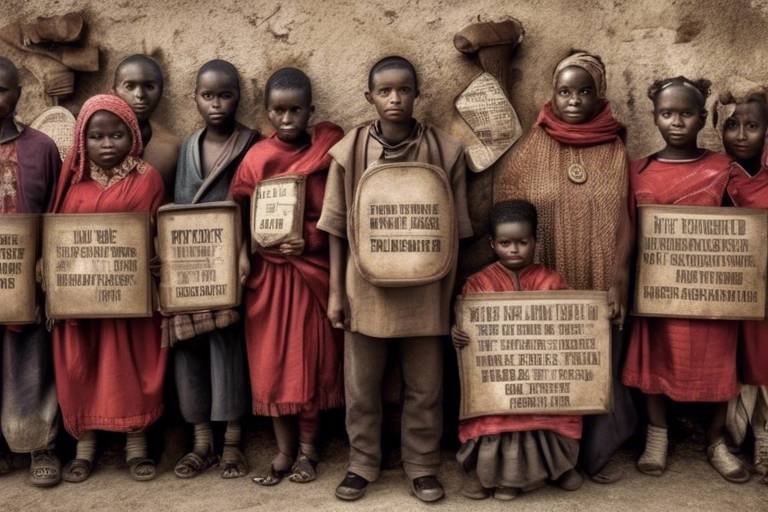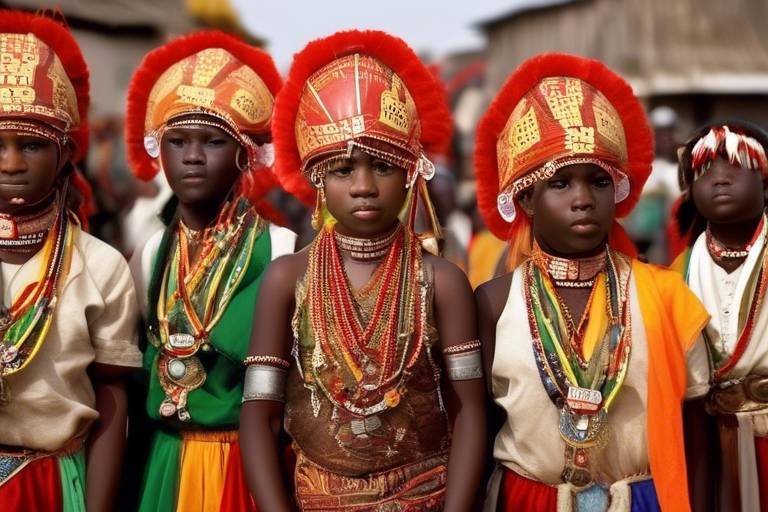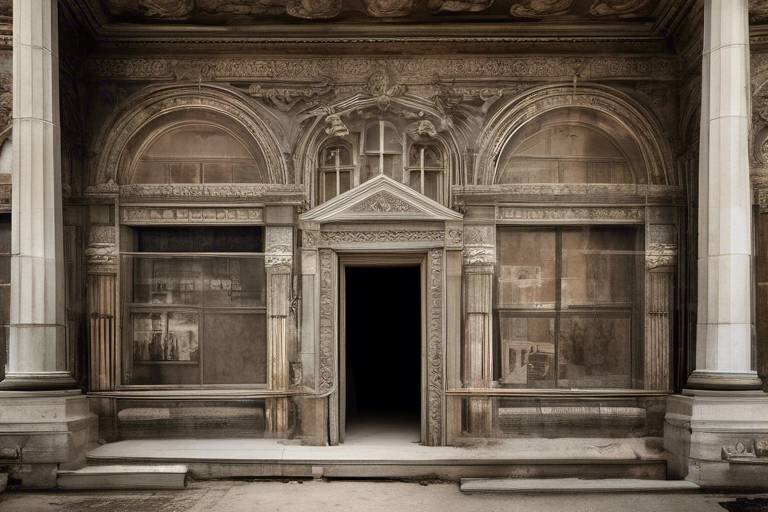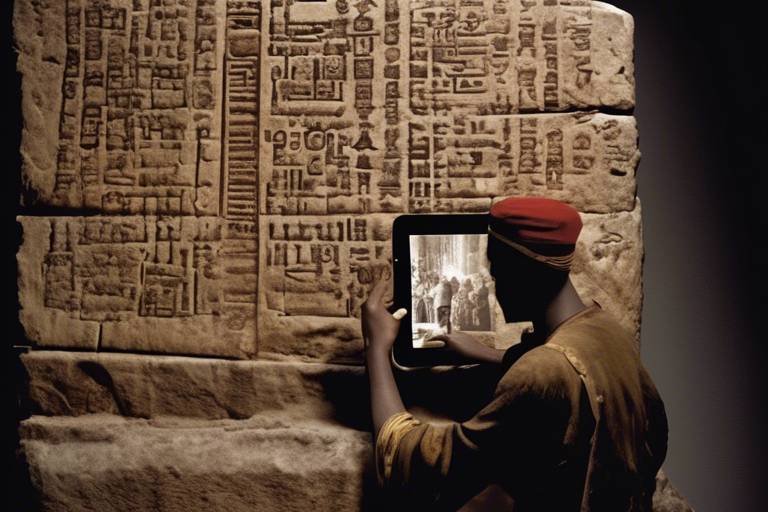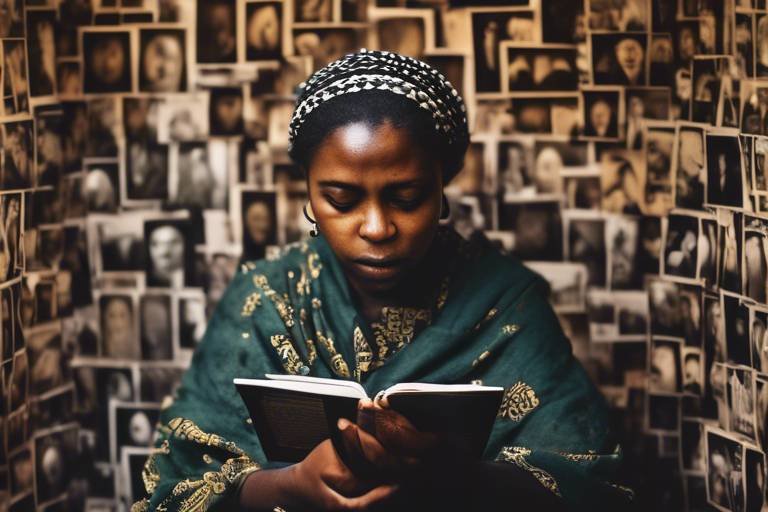The Impact of Political Changes on Cultural Heritage
Political changes have a profound impact on cultural heritage across the globe. These shifts in political landscapes can significantly influence the preservation, protection, and promotion of cultural heritage sites, artifacts, and traditions. As governments come and go, the fate of these invaluable aspects of our history hangs in the balance, awaiting the decisions and actions of those in power.
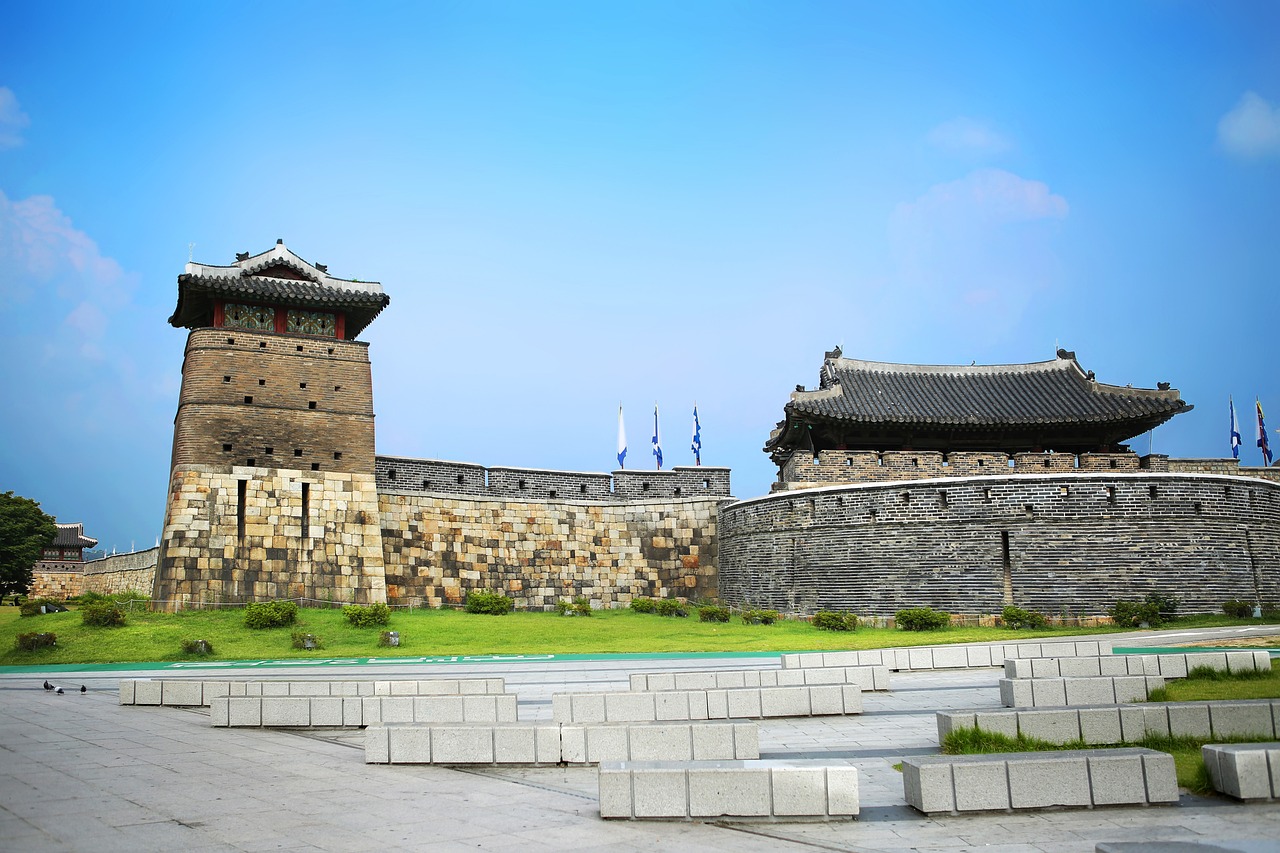
Historical Significance
Exploring how shifts in political landscapes affect the preservation, protection, and promotion of cultural heritage sites, artifacts, and traditions worldwide.
Throughout history, political changes have played a significant role in shaping the preservation and interpretation of cultural heritage. The rise and fall of empires, revolutions, and colonialism have all left their mark on cultural sites and artifacts, influencing how they are perceived and valued. These historical events have often sparked debates on ownership, representation, and the narratives surrounding cultural heritage. For example, the political ideologies of rulers have determined which heritage sites are celebrated and which are neglected, reflecting the power dynamics of their time.

Legislation and Policies
When exploring the impact of political changes on cultural heritage, it is crucial to delve into the realm of legislation and policies. Governments play a significant role in safeguarding and preserving cultural heritage through the establishment of regulations and frameworks that dictate how these sites and artifacts are managed and protected. These laws not only ensure the physical conservation of heritage but also guide how it is presented and interpreted to the public.
Legislation and policies serve as the backbone of cultural heritage preservation, providing a legal foundation for the protection of valuable historical sites and artifacts. By enacting laws that govern the management of cultural heritage, governments can mitigate the risk of damage, destruction, or unauthorized access to these irreplaceable treasures. Additionally, these regulations help in maintaining the authenticity and integrity of heritage sites, ensuring that they are passed down intact to future generations.
Moreover, policies related to cultural heritage often extend beyond mere preservation efforts. They also encompass initiatives aimed at promoting public awareness, education, and engagement with these historical assets. By integrating cultural heritage into educational curricula, organizing public exhibitions, and supporting research projects, governments can foster a sense of appreciation and responsibility towards preserving our shared cultural legacy.
International cooperation plays a crucial role in shaping legislation and policies regarding cultural heritage protection. Through collaborative efforts and agreements between nations, a unified approach can be adopted to address cross-border challenges such as illicit trafficking of artifacts, heritage site management, and emergency response in times of crisis. By aligning their policies and sharing best practices, countries can enhance the effectiveness of their cultural heritage preservation efforts on a global scale.
In conclusion, legislation and policies form the cornerstone of cultural heritage preservation, providing a legal framework for the protection, management, and promotion of our shared history. By enacting robust laws and regulations, governments can ensure that cultural heritage remains safeguarded and celebrated amidst the ever-evolving political landscape.

International Cooperation
Exploring how shifts in political landscapes affect the preservation, protection, and promotion of cultural heritage sites, artifacts, and traditions worldwide.
International cooperation plays a crucial role in safeguarding cultural heritage during times of political upheaval. When political changes occur, the need for global collaboration and diplomatic efforts becomes even more pressing. Countries must come together to protect shared cultural treasures and ensure their preservation for future generations.

Conflict and Destruction
When political conflicts and wars erupt, cultural heritage often finds itself caught in the crossfire, facing the grim reality of destruction and looting. The ravages of conflict can turn centuries-old sites into mere rubble, erasing invaluable pieces of history in the blink of an eye. The loss of these cultural treasures not only robs future generations of their heritage but also diminishes the collective memory of humanity.
Amidst the chaos of conflict, looters and opportunists often exploit the turmoil to pillage archaeological sites and museums, seeking to profit from the illicit trade of stolen artifacts. The illicit trafficking of cultural heritage not only strips nations of their identity but also fuels a black market that thrives on the plunder of priceless antiquities.
International conventions and agreements, such as the UNESCO 1970 Convention on the Means of Prohibiting and Preventing the Illicit Import, Export, and Transfer of Ownership of Cultural Property, play a crucial role in combating the illicit trafficking of cultural heritage during times of conflict. These legal frameworks aim to prevent the pillaging of cultural artifacts and promote the repatriation of stolen items to their countries of origin.
Furthermore, the destruction of cultural heritage sites during conflicts not only erases physical structures but also undermines the social fabric and identity of communities. These sites serve as symbols of shared history and cultural pride, connecting present generations to their past. The deliberate targeting of cultural heritage in conflicts is not just an attack on monuments but a direct assault on the collective memory and identity of a people.
Despite the challenges posed by conflict, there are instances where communities have come together to protect their cultural heritage from destruction. Local initiatives, supported by international organizations and NGOs, have played a crucial role in safeguarding heritage sites and artifacts amidst the chaos of war. Through community engagement and grassroots efforts, individuals have risked their lives to preserve their cultural legacy for future generations.
As we navigate the complex interplay between political conflicts and cultural heritage, it becomes evident that the preservation of our shared past requires a concerted effort from governments, communities, and individuals alike. Only through collective action and unwavering commitment can we protect our cultural treasures from the ravages of conflict and ensure that our heritage endures for generations to come.

Community Engagement
Community engagement plays a crucial role in the preservation and promotion of cultural heritage, especially in the face of political changes. Local communities are often the custodians of cultural traditions and heritage sites, passing down knowledge and practices through generations. Their active involvement not only ensures the protection of these valuable assets but also fosters a sense of ownership and pride among community members.
By engaging with local residents, cultural heritage initiatives can gain valuable insights into the significance of heritage sites and artifacts. This grassroots involvement helps in creating a sense of connection and belonging, encouraging community members to take an active role in preserving their cultural identity. Through collaborative efforts, communities can develop sustainable strategies for safeguarding heritage assets for future generations.
Furthermore, community engagement can lead to the development of innovative solutions to challenges faced by cultural heritage sites. Local knowledge and expertise can complement formal conservation efforts, offering unique perspectives and traditional practices that contribute to the overall preservation of heritage sites. By involving communities in decision-making processes, stakeholders can ensure that conservation efforts are culturally sensitive and inclusive.
One effective way to engage communities in cultural heritage preservation is through educational programs and awareness campaigns. By raising awareness about the importance of heritage conservation, local residents can become advocates for preserving their cultural legacy. Educational initiatives can empower community members to take pride in their heritage and actively participate in conservation activities.
Moreover, community engagement fosters a sense of shared responsibility and collective action in safeguarding cultural heritage. By involving local stakeholders in planning and implementation processes, initiatives can benefit from diverse perspectives and local expertise. This collaborative approach not only strengthens community bonds but also enhances the sustainability of heritage conservation efforts.
In conclusion, community engagement is a vital component of cultural heritage preservation, particularly in the context of political changes. By involving local communities in conservation efforts, stakeholders can ensure the long-term protection and promotion of cultural heritage assets. Through collaborative partnerships and inclusive practices, communities can play a significant role in safeguarding their cultural identity amidst evolving political landscapes.

Technological Innovations
Technological innovations play a crucial role in the preservation and protection of cultural heritage, especially in regions facing political instability. Advancements in technology have revolutionized the way cultural artifacts and sites are documented, preserved, and safeguarded.
One significant technological innovation is the use of 3D scanning and modeling techniques. These cutting-edge technologies allow for the creation of detailed digital replicas of cultural heritage sites and artifacts. By utilizing 3D scanning, experts can capture precise measurements and intricate details, ensuring that even in the face of conflict or destruction, a digital record of the heritage remains intact.
Furthermore, drones have become invaluable tools in monitoring and protecting cultural heritage sites in politically unstable regions. Drones equipped with high-resolution cameras can provide aerial surveillance, allowing authorities to detect any unauthorized activities or potential threats to heritage sites. This real-time monitoring helps in preventing looting and vandalism, ultimately contributing to the preservation efforts.
Augmented reality (AR) and virtual reality (VR) technologies have also emerged as powerful tools in the promotion and interpretation of cultural heritage. Through AR and VR applications, visitors can experience immersive virtual tours of historical sites, even if access to the physical location is restricted due to political reasons. These technologies enhance the educational and cultural value of heritage sites, making them accessible to a global audience.
Moreover, digital databases and online platforms have facilitated the sharing of cultural heritage information across borders. Museums, institutions, and experts can collaborate virtually to exchange knowledge, research findings, and best practices in heritage preservation. This interconnectedness through technology strengthens global efforts in safeguarding cultural heritage, transcending political boundaries.
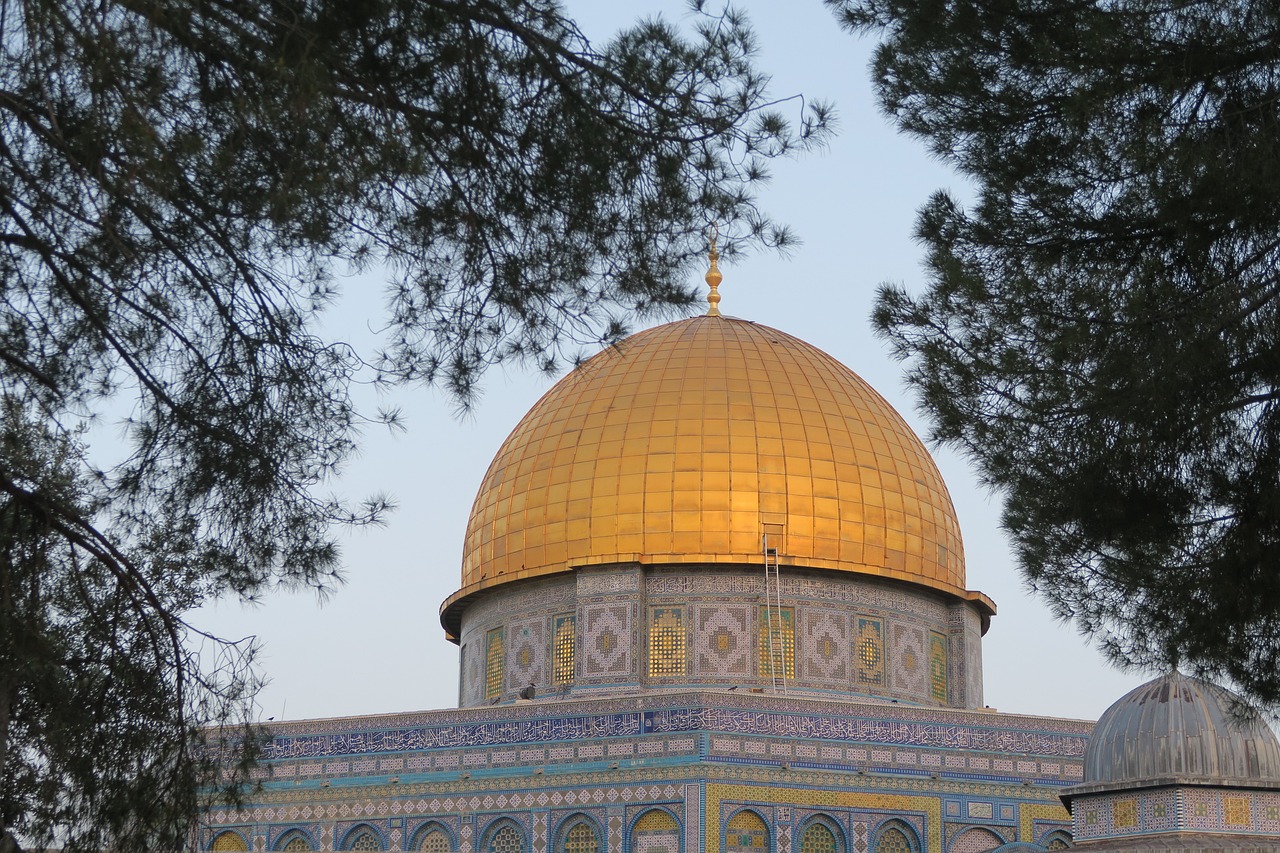
Economic Implications
When it comes to the realm of cultural heritage, the economic implications of political changes cannot be underestimated. The funding allocated for preservation projects, archaeological excavations, museum maintenance, and heritage site restoration often fluctuates in response to shifting political landscapes. Governments facing economic challenges may prioritize other sectors over cultural heritage, leading to budget cuts and limited resources for conservation efforts.
Moreover, political instability can deter tourism, a significant source of revenue for many cultural heritage sites. Conflicts and unrest not only endanger the physical integrity of these sites but also diminish their appeal to visitors, resulting in decreased income that could have been reinvested in their upkeep. The economic sustainability of heritage sites is intricately linked to political stability and financial support from governing bodies.
On the flip side, political changes can also present economic opportunities for cultural heritage. New administrations may prioritize heritage preservation as part of their cultural agenda, leading to increased funding and innovative projects aimed at promoting and safeguarding cultural assets. Public-private partnerships and international collaborations can also open up avenues for investment in heritage conservation, creating a win-win situation for both cultural preservation and economic growth.
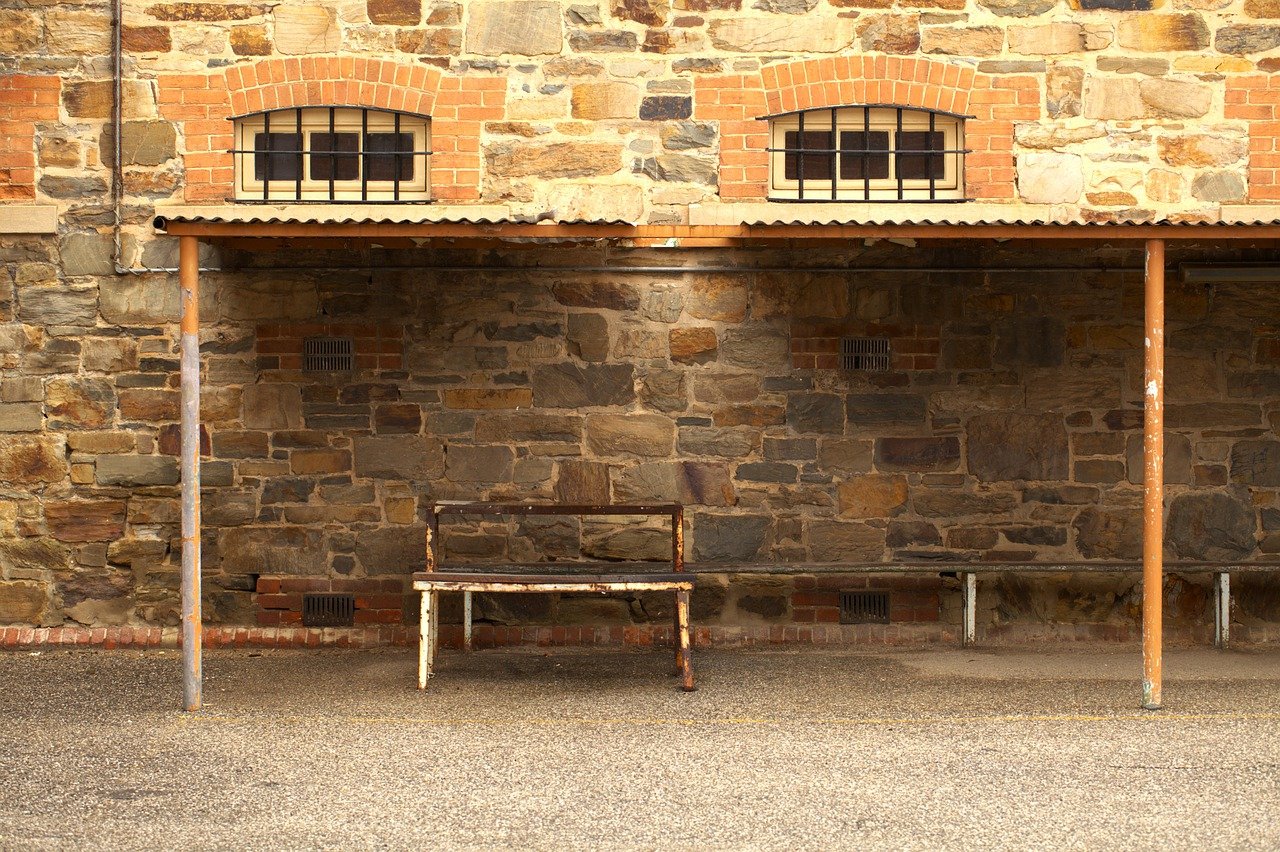
Future Challenges and Opportunities
Exploring how shifts in political landscapes affect the preservation, protection, and promotion of cultural heritage sites, artifacts, and traditions worldwide.
As we navigate the complex interplay between politics and cultural heritage, it becomes evident that the future is fraught with both challenges and opportunities. One of the key challenges lies in balancing the need for development with the preservation of heritage sites. As urbanization and infrastructure projects expand, there is a risk of encroachment on culturally significant areas. Finding a harmonious coexistence between progress and preservation will be crucial in the coming years.
Moreover, the rise of digital technologies presents both challenges and opportunities for cultural heritage. While virtual reality and digital archives offer innovative ways to engage with heritage, they also raise questions about the authenticity and integrity of the experience. How do we ensure that the digital representations do justice to the rich history and cultural significance of these sites?
Another pressing issue is the impact of climate change on cultural heritage. As global temperatures rise and natural disasters become more frequent, heritage sites are increasingly vulnerable to damage and destruction. Finding sustainable solutions to mitigate the effects of climate change on cultural heritage will be a crucial endeavor in the future.
On the flip side, political changes also bring opportunities for the revitalization and reinterpretation of cultural heritage. As societies evolve, there is a growing awareness of the need to decolonize narratives and give voice to marginalized communities. Political shifts can provide a platform for reimagining the significance of heritage and promoting inclusivity in its preservation and promotion.
In the face of these challenges and opportunities, collaboration and innovation will be key. By fostering partnerships between governments, communities, and technological experts, we can work towards a future where cultural heritage is not just preserved but celebrated, where its value is not just historical but also contemporary and relevant to our ever-changing world.
Stay tuned for the answers to commonly asked questions about the impact of political changes on cultural heritage!
Frequently Asked Questions
- What is cultural heritage?
Cultural heritage encompasses the tangible and intangible aspects of a society's history, including monuments, artifacts, traditions, and practices that are passed down through generations.
- How do political changes impact cultural heritage?
Political changes can affect cultural heritage by influencing funding, legislation, protection efforts, and community engagement, leading to both positive and negative outcomes for heritage sites and traditions.
- Why is community engagement important for safeguarding cultural heritage?
Community engagement plays a vital role in preserving cultural heritage as local involvement fosters a sense of ownership and responsibility, leading to increased protection and promotion of heritage assets.
- What role does technology play in preserving cultural heritage?
Technology aids in documenting, conserving, and safeguarding cultural heritage through innovative tools such as 3D scanning, virtual reality, and digital databases, enhancing preservation efforts in politically unstable regions.
- How can international cooperation help protect cultural heritage?
International cooperation fosters collaboration among nations to combat illicit trafficking, promote awareness, and implement conservation strategies, strengthening the global efforts to safeguard cultural heritage during political turmoil.


